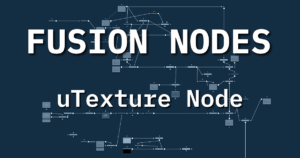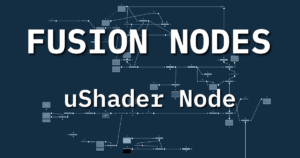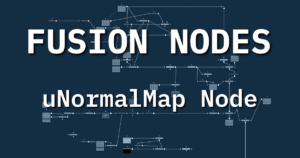Your cart is currently empty!
DaVinci Resolve Fusion Modifiers
Master Parameter Control & Animation with Fusion Modifiers
Unlocking powerful effects and intricate animations in Fusion often comes down to controlling parameters. While manual keyframing is fundamental, Fusion offers a more dynamic system: Modifiers.
What Are Fusion Modifiers?
Modifiers are essentially extensions to a node’s toolset. They provide automated or procedural ways to control parameters, enabling the creation of complex animations that would be challenging or time-consuming to build manually. Modifiers can range in complexity, from simple linking and keyframe-based controls to intricate expressions, procedural functions, or integration with external data.
How to Add and Control Modifiers
Adding a modifier is straightforward:
Step 1: Locate the Parameter
Find the parameter you want to modify in the Inspector panel or its onscreen control in the Viewer.
Step 2: Right-Click
Right-click directly on the parameter label or the onscreen control.
Step 3: Choose ‘Modify With’
From the contextual menu, select ‘Modify With’.
Step 4: Select the Modifier
A list of appropriate modifiers for that specific parameter type will appear. Select the one you need.
For example, adding a Perturb modifier to a slider parameter can automatically animate its value by creating a smooth, random wiggle.
Once a modifier is added, its controls are found in the Modifiers tab of the Inspector. This tab will highlight to indicate that modifiers are applied to the selected node. Each modifier type has its own unique set of controls, allowing you to fine-tune its behavior. With the Perturb modifier, parameters like Strength, Wobble, and Speed let you adjust the nature of the random motion while viewing the animation.
Combining Modifiers and Keyframes
Modifiers can work alongside traditional keyframe animation. A common technique is to first use keyframes to define a primary motion path for a parameter. This action itself can sometimes create a specific modifier, like a Path modifier, representing the keyframed animation. You can then add another modifier, such as Perturb, to the same parameters or even to the Path modifier itself. This creates secondary motion, like a subtle wiggle on top of a main movement, resulting in more natural and organic-looking animations.
Linking Parameters with the Publish Modifier
The Publish modifier is a powerful tool for linking parameters. It makes the value of one parameter available so that other parameters can connect to it. This simplifies controlling multiple settings simultaneously.
Here’s the basic process
Step 1: Publish the Source
Right-click the parameter you want to be the ‘master’ control and choose ‘Modify With’ > ‘Publish’.
Step 2: Connect the Target
Go to another parameter you want to link, right-click it, and select ‘Connect To’. The published parameter’s name will appear in the list; select it.
Once connected, these two parameters are linked. Changing the value of the published parameter in the Modifiers tab will automatically update the value of the connected parameter. A single published parameter or modifier can even be connected to multiple other parameters, allowing them all to be controlled as one. This connection is bidirectional in many cases.
For very complex setups, modifiers offer flexibility similar to nodes in the Node Editor. They can be inserted into an existing chain or branched using the ‘Insert’ submenu from the parameter’s contextual menu.
Exploring the Range of Modifiers
The specific modifiers available depend on the type of parameter you are modifying. The Fusion toolset includes a wide variety:
- Expressions: Use mathematical calculations or link variables to parameters.
- Sampling Colors: Modifiers that can sample colors from an image.
- Integration with Edit/Cut Pages: Modifiers like Resolve Parameters and Animation Curves are designed to work directly with the timeline pages, assisting in modifying templates and transitions.
Modifiers significantly enhance a node’s capability, providing a flexible system to automate, link, and procedurally control parameters for sophisticated effects and animations.







Start the discussion at postprolist.com